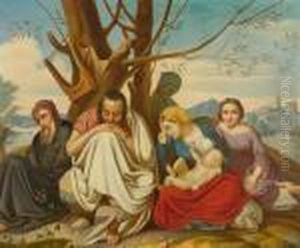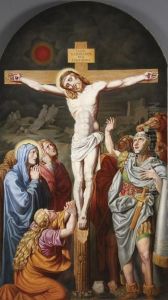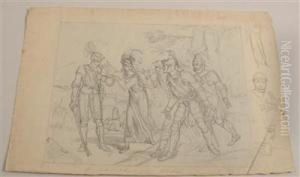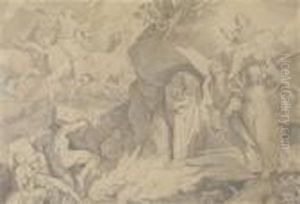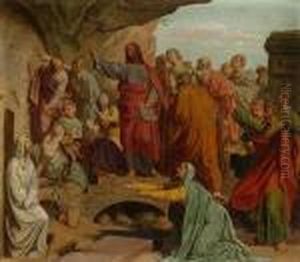Josef Von Fuhrich Paintings
Josef von Führich was an Austrian painter, one of the notable artists of the Nazarene movement. He was born on February 9, 1800, in Kratzau, Bohemia, which is now known as Chrastava in the Czech Republic. Führich's early exposure to the arts was influenced by the religious and historical paintings that surrounded him in his formative years.
Führich began his artistic training at the Prague Academy, and later moved to Vienna to further his education. His work quickly became recognized for its spiritual intensity and adherence to traditional religious themes, often characterized by a distinctive blend of Gothic and Renaissance influences. Führich was deeply inspired by the art of the Middle Ages, and this was reflected in the stylistic elements of his paintings, such as the use of elongated figures and a focus on narrative detail.
In 1834, Führich relocated to Rome, where he became associated with the Nazarenes, a group of German-speaking artists who sought to revive the spirituality and purity found in the art of the early Renaissance and medieval periods. They were also known for their rejection of the academic standards of the time, which they felt were corrupt and lacked moral substance. Führich's association with the Nazarenes greatly affected his approach to art, as he adopted their ethos of creating works that were deeply moral and imbued with Christian symbolism.
One of Führich's most significant contributions to art was his cycle of paintings illustrating the Legend of Saint Elizabeth of Hungary, which exemplified his skill at conveying complex religious subjects with clarity and emotion. His other notable works include a series of illustrations for Dante's 'Divine Comedy' and various religious compositions that were widely celebrated for their devotional character.
Throughout his career, Führich held various academic positions, including a professorship at the Academy of Fine Arts in Vienna. His influence extended beyond his own paintings, as he played a significant role in the education of future generations of artists. Josef von Führich's dedication to the Nazarene ideals and his mastery of religious imagery left a lasting impact on 19th-century art. He passed away on March 13, 1876, in Vienna, leaving behind a legacy of artwork that continues to be admired for its spiritual depth and technical precision.



